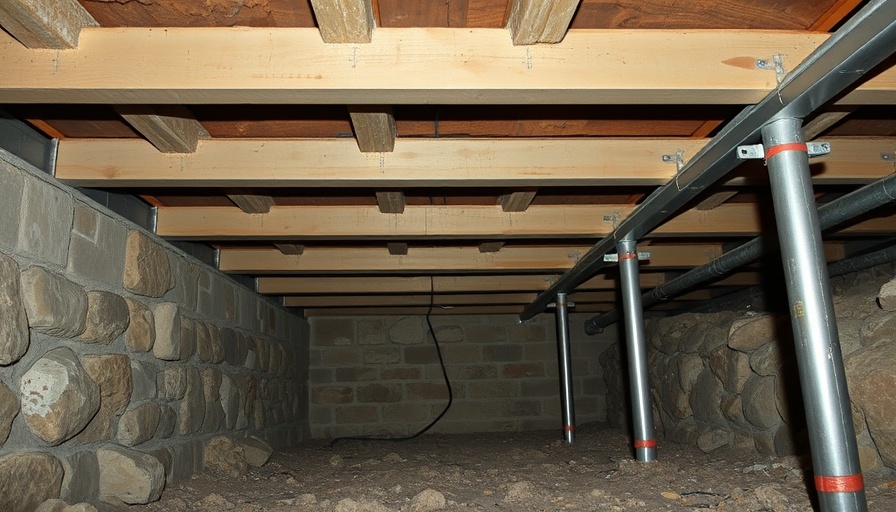
The Hidden Dangers of Sagging Floors
Sagging floors are not just unsightly; they pose significant risks to the safety and integrity of your home. For homeowners like Wyndell in Cross Junction, VA, noticing a hump in the kitchen floor accompanied by cracks in the walls is a wake-up call. Such indicators suggest that the structure may be at risk, leading to potential floor joist failure and increased repair costs if left unaddressed.
Understanding the Structural Issues
When structural issues arise, understanding their origins is crucial for proper repair. In Wyndell's case, a professional assessment by the experts at LUX Foundation Solutions revealed substantial sagging in floor joists. This condition originated from years of unsupported spans and potential moisture damage within the crawl space. Additionally, uneven weight distribution led to stress on interior walls—a common consequence of inadequate support underneath the flooring system.
The Importance of Timely Repairs
Many homeowners may be tempted to ignore signs of sagging floors, thinking that they can live with the problem. However, delaying repairs can exacerbate the situation. As the foundation weakens, cracks can widen and structural reliability is compromised, leading to a greater risk of collapse or severe damage to the home’s structural integrity. For a safe living environment, addressing these issues promptly is paramount.
Implementing a Steel Beam and Adjustable Post Solution
A successful repair strategy for sagging floors often includes the use of steel beams and adjustable posts. This method provides a robust solution for underpinning weakened joists while evenly distributing the weight across the floor system. In Wyndell's case, applying these supports not only fixed the immediate problem but also ensured long-term stability for his home. The strength of steel beams, combined with the adjustable nature of the posts, allows for tailored solutions that effectively address specific sagging issues.
Future Considerations for Homeowners
For homeowners in Cross Junction and beyond, understanding the maintenance of floor systems is essential. Keeping an eye out for early warning signs, such as creaking noises, uneven floors, or new cracks in walls, can make all the difference. Hiring a qualified professional for regular inspections can help detect potential issues before they escalate, ensuring that homes remain safe and secure.
Conclusion: Protecting Your Investment
Homeowners must recognize that the integrity of their home is paramount. Addressing sagging floors promptly not only protects safety but also preserves property value. If you’re experiencing similar issues in your home, it’s time to reach out for a professional evaluation. With the right repairs, you can reinforce your home’s structure and enjoy peace of mind.
Call (540)508-8587 today for a free estimate and ensure your home is both safe and level.
 Add Row
Add Row  Add
Add 




Write A Comment